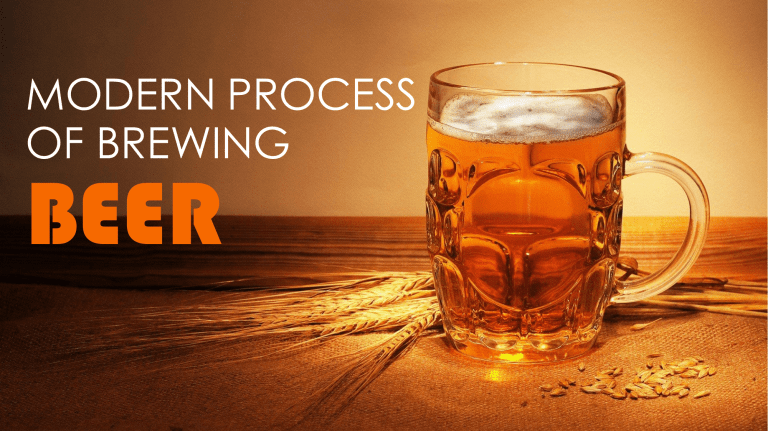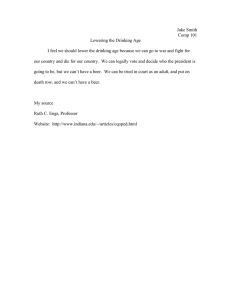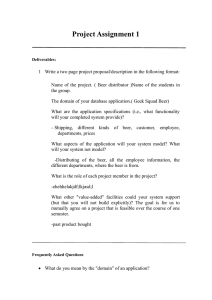
MODERN PROCESS OF BREWING BEER MALT is germinated cereal grain that has been dried in a process known as malting. The grain is germinated by soaking in water and is then halted from germinating further by drying with hot air. Malting develops the enzymes required for modifying the grains' starches and for breaking down proteins into forms that can be used by yeast. Step 1. MILLING The malt is crushed to break up the grain kernels and to extract fermentable sugars. The milled product is called grist. Step 2: MASH CONVERSION The grist is then transferred into a mash tun, where it is mixed with heated water in a process called mash conversion. The conversion process uses natural enzymes in the malt to break the malt’s starch down into sugars. Step 3: LAUTERING The mash is then pumped into the lauter tun, where a sweet liquid (known as wort) is separated from the grain husks. Step 4: THE BOIL The wort is then collected in a vessel called a kettle, where it is brought to a controlled boil before the hops are added. Step 5: WORT SEPARATION AND COOLING After boiling, the wort is transferred into a whirlpool for the wort separation stage. During this stage, any malt or hop particles are removed to leave a liquid that is ready to be cooled and fermented. Step 6: FERMENTATION To start the fermentation, yeast is added during the filling of the vessel. Yeast converts the sugary wort into beer by producing alcohol, a wide range of flavors, and carbon dioxide (used later in the process to give the beer its sparkle). Step 7: MATURATION After fermentation, the young “green” beer needs to be matured in order to allow both a full development of flavors and a smooth finish. Step 8: FILTRATION, CARBONATION, & CELLARING After reaching its full potential, the beer is filtered, carbonated, and transferred to the bright beer tank, where it goes through a cellaring process that takes 3-4 weeks to complete. Once completed, the beer is ready to be packaged. PASTEURIZATION - the process of heat-treating beer to inhibit the growth of potential beer spoilage microorganisms and prolong the shelf life of beer TYPES Tunnel Pasteurization Flash Pasteurization (HTST) - beer is pasteurized by being - beer is heat-treated by being passed through a spraying passed through a heat exchanger to a chamber called tunnel temp. of 70-72 degree C for as little as 30 seconds ADVANTAGES • low level of micro risk • effective for bottled canned beer • maintains color and flavor better and than other HTST methods • effective for kegged beer DISADVANTAGES • negatively affect flavor • expensive • can cause product • risks killing non-pathogenic, inconsistencies beneficial microbes STERILE FILTRATION - a form of filtration fine enough to reduce yeast and beer spoilage organisms to extremely low levels without the heat treatment of beer as used in flash and tunnel pasteurization. - also termed “cold sterilization” or “draught filtered” STERILIZATION - heat treatment applied is of more intensity than of that of pasteurization, killing all microorganisms present in beer. THANK YOU AND CHEERS!

